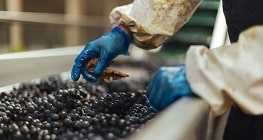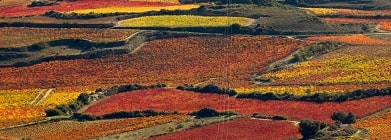ORDER APA/795/2004 of 25 March 2004 of the Ministry of Agriculture amended articles 39, 40, 41 and 42 of the Regulations of the DOCa Rioja in order to make it possible “to constitute the Control Board with the same level of representation and accountability as the Rioja Wine Interprofessional Organization, in accordance with the eighth additional provision of the Spanish Vine and Wine Act, in addition to introducing the necessary changes in its functions and form of operation.”
The Control Board Plenary, Management Body of the Designation appointed by the Ministry of Agriculture, Food and the Environment and accountable to this Ministry, consists of 32 members representing winemaking and grape-growing associations and they are the same individuals constituting the Board of Directors of the Rioja Wine Interprofessional Organization, whose President is also the President of the Control Board, pursuant to current regulations. Also members of the Plenary, although without the right to vote, are the representatives of the Ministry of Agriculture, Food and the Environment and of the Public Administrations of the Autonomous Communities of La Rioja, the Basque Country and Navarre.
Article 40 of the Regulations states that the Control Board is responsible, “in addition to the functions set forth in the provisions of a general nature which apply to it, and those attributed in these Regulations”, for the following: complying and enforcing the Regulations, recommending any internal provisions that may be necessary to carry these out, and ordering the implementation of any agreements adopted; governing and managing the activities of the Control Board as well as organising its internal structure and services; administering the revenue and funds of the Control Board and arranging for payments; recruitment, renewal or dismissal of personnel; keeping the Public Administration informed as to any incidents taking place in production or on the market and, finally, sending interested bodies the agreements passed by the Control Board for general compliance thereof.
With regard to the functions to be carried out by the President of the Control Board, “who will be the President of the Board of Directors of the Interprofessional Organization and who, in accordance with its Articles, may either be a member of the Board or an outside person,” article 41 confers upon this person the legal representation of the Control Board before any public or private entity, Administration, Body, legal or arbitration authority with the further mandate to chair sittings and moderate the progress of discussions, regulating deliberations and votes; to ensure that laws are complied with; to endorse the Minutes and Certificates of the Board’s agreements and to exercise any other function specifically designated by the Laws, Regulations or the Plenary.
Finally, it is worth pointing out, with regard to the operational structure established in article 42 that the Board will meet a minimum of once every two months as well as whenever deemed necessary by the President or requested by at least 15% of the total votes. All decisions are to be approved by a minimum of 75% of the votes either present and/or represented, with at least 50% of votes from each professional sector. The President does not have a casting vote.















